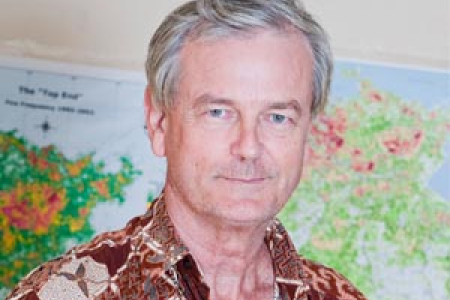Survey to provide report card on fire management in NT National Parks
Researchers have travelled to Nitmiluk (Katherine Gorge) National Park this week as part of a two-decades-long project to study the effects of various fire regimes on flora and fauna in the Northern Territory. The study is the longest running savanna monitoring project in Australia.
Charles Darwin University Darwin Centre for Bushfire Research (DCBR) Dominique Lynch said the team would survey permanent sites in the park to add to the long-term dataset, building an overall picture of health and understanding of the savannas to inform conservation management.
“Land managers have been working hard to implement the new fire management strategies built on the back of strong scientific evidence,” Ms Lynch said. “This trip will give us an opportunity to check on these strategies and provide land managers with a report card.”
Ms Lynch will co-ordinate the team that will spend two weeks working within the park to survey 46 sites over almost 300 hectares using helicopters to reach the most sensitive species high on escarpments.
“Based on the past decade of evidence, land managers have adopted an ‘early burn’ fire regime,” she said. “Burning early after the wet season results in cooler and less destructive fires. It also reduces the fuel load so that later hotter fires that are more destructive are less frequent. This is good news for the more fire-sensitive species found in the park and also tourists seeking to enjoy the parks.
“It will also give us a chance to check how the area faired after the large wild-fire that tore through the park last year.”
The program has helped build a picture of the impact of fire on the tropical savanna landscapes by investigating the three major savanna conservation reserves of the Top End (Kakadu, Nitmiluk and Litchfield) at a series of more than 200 permanent sites for the past 20 years. Every five years the sites of each park have been re-visited to collect data on flora and fauna.
DCBR lead researcher Professor Jeremy Russell-Smith said that monitoring the long-term changes in savanna vegetation was important to understand its effects on biodiversity and other issues such as carbon storage and potential carbon offset programs.
“This work is nationally significant,” Professor Russell-Smith said. "This is the longest running savanna monitoring project in Australia and is recognised internationally as one of only two major savanna datasets.”
The program is funded through the Terrestrial Ecosystem Research Network and is part of a research program involving seven other Australian sites. The three parks long-term monitoring program is part of a research partnership with Parks Australia, traditional owners and the Northern Territory Government. DCBR is located within CDU’s Research Institute for the Environment and Livelihoods.
